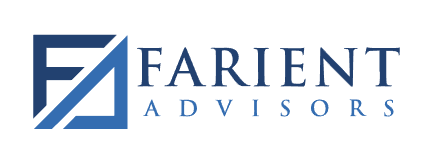Reflections on the European Networking Group’s Executive Compensation Conference
15th Annual Executive Compensation and Benefits Conference - 13th & 14th Sept 2016, Brussels
I recently chaired the European Networking Group’s 15th Annual Executive Compensation Conference—a gathering of very experienced players in the field of executive pay in Europe, a politically charged and highly controversial topic. The evening before a conference, if you are the Chairperson, is a nervous time. What one does not know, until after the conference is over, is whether the speakers will engage their audience and the participants will get what they are looking for from their investment in a two day trip to Brussels.
I should not have worried. This was an excellent event which covered a huge amount of ground, focusing on the key trends for executive compensation and benefits professionals. It is impossible to include summaries from every speaker, but I will include a few highlights selected because I think they made some very important points, and brought a wealth of experience that is very useful for practitioners.
The speakers that I would like to highlight were:
- James Stephenson, Global Head of Remuneration and Performance at the £46bn mining company, Rio Tinto. He covered insights on innovative developments in executive pay packages
- Mareille Smit, Global Executive Compensation Manager at the €21bn brewing company Heineken. With 750 senior managers in 179 countries, Mareille covered the case study of her team’s work keeping up with trends in performance based pay, globally.
- Mark Kendall, Vice President, Compensation & Benefits for one of the key divisions of the distribution company Deutsche Post DHL, Europe’s largest postal services, e-commerce and parcels company, showcased the huge project to globalise Incentives at DHL: converting country bonus plans to a single aligned plan.
Rio Tinto has always demonstrated a very thoughtful approach to remuneration governance, and James’ presentation demonstrated the extent to which the company is at the forefront of thinking in this area. He identified five trends we should all remember:
- One size does not fit all.
- Remuneration Committees, and the general public, have a rose-tinted view of potential upside of long term incentives (LTIs). In fact, there are plenty of risks.
- Everyone wants simplicity, but not every situation warrants it, or can afford it.
- Far too much time and effort is spent on ‘the few’, when the requirements of ‘the many’ are just as important.
- The increased complexity of remuneration is stretching the resources of the remuneration committee alone.
James also pointed out how performance measurement, objective setting, and the use of discretion are a near art-form today. A key point is that building the right culture and set of values is vitally important and that means individual performance measures along with team, division, or corporate measures. It also means delinking ratings from performance scores.
The Heineken pay design story was about trying to create a form of global consistency that pays fairly, competitively, pays for performance, and supports the business strategy—a tricky balancing act. In addition to the usual well thought-through pay programme benchmarking, Mareille set out some intriguing insights about ‘Improvers’ (focused on process and efficiency; think “squirrel”), ‘Adjustors’ (focused on efficiency and product; think “chameleon”), ‘Followers’ (focused on process and innovation; think “penguin”) and “Differentiators” (focused on innovation and product). For each, consider a tailored programme. Fascinating.
The DHL example is about a huge enterprise with 160,000 people. The message: one global company. Same company, same message! Easier said than done. Apart from the sheer scale of the project, what was fascinating about Mark Kendall’s talk was that he and his colleagues at DHL went back to first principles, asking the simple question: what do we need incentives for? Apart from the obvious attract, motivate, and retain, it’s worth including the other points Mark covered—they are a lever for change, link reward to results, recognise contribution, are a human need, and send a message. On the downside, they simply don’t work, can be a de-motivator, can inhibit teamwork, create measurement problems, reward quantity not quality, and are poor value for money. The way DHL went about solving this was to focus on what worked for high-performing companies: alignment between rewards and business objectives, a formal link to performance management, fewer metrics, and higher target and maximum performance expectations.
A good discussion with a very informed audience, representing a wide range of views around Europe. I would encourage any practitioners in exec comp to consider attending ENG’s sessions in the future. If you attended, or wish you had, and want to talk more about these or the other very informative sessions, please contact me.
